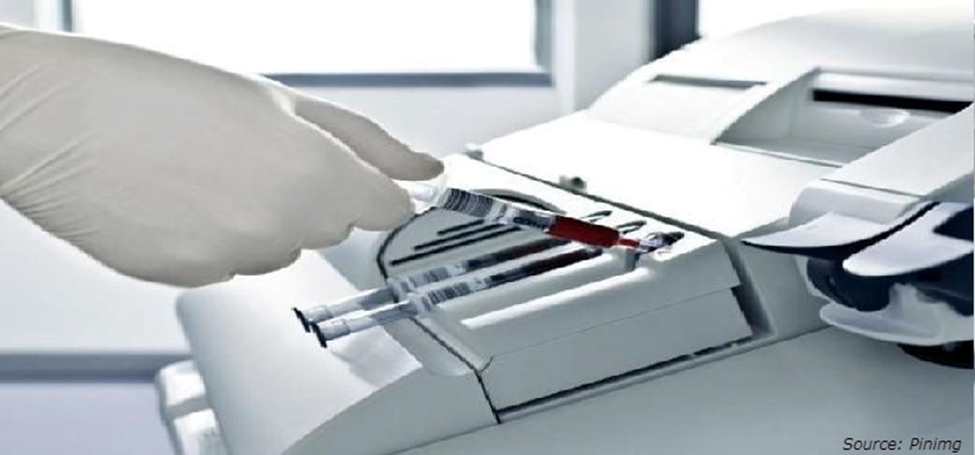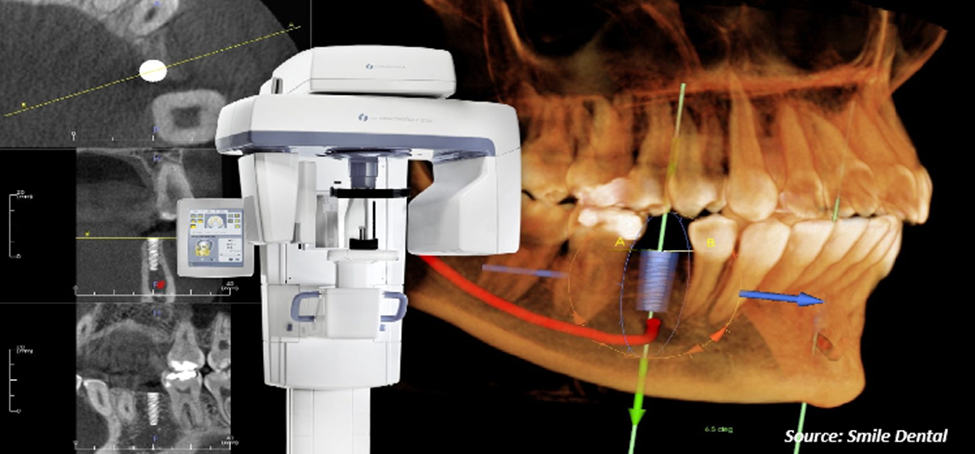
North America In-Vitro Diagnostics Market by Type (Reagents, Instruments, and Software & Services), by Technique (Immunodiagnostics, Hematology, Molecular Diagnostics, Tissue Diagnostics, Clinical Chemistry, and Other IVD Techniques), by Application (Infectious Diseases, Cancer, Cardiac Diseases, Immune System Disorders, Nephrological Diseases, Gastrointestinal Diseases, and Others), and by End User (Stand Alone, Laboratory, Hospitals, Academics and Medical Schools, Point of Care Testing, and Other End Users) – Opportunity Analysis and Industry Forecast, 2024–2030
Industry: Healthcare | Publish Date: 06-Jul-2024 | No of Pages: 165 | No. of Tables: 117 | No. of Figures: 82 | Format: PDF | Report Code : HC2341
Market Overview
The North America In-Vitro Diagnostics Market size was valued at USD 33.54 billion in 2023, and is predicted to reach USD 43.64 billion by 2030, at a CAGR of 3.4% from 2024 to 2030. In-vitro diagnostics (IVD) refers to a wide range of medical tests conducted on samples of bodily fluids, tissues, or cells outside of the body to diagnose diseases, monitor therapy, and assess overall health conditions. These tests are performed in laboratory settings using various techniques and technologies, including immunoassays, molecular diagnostics, clinical chemistry, hematology, and microbiology.
IVD tests enable early detection of diseases, allowing for timely intervention and treatment initiation. By providing rapid and accurate results, these tests facilitate personalized medicine, guiding tailored treatment approaches based on individual patient characteristics. Also, immunoassay experiments provide valuable insights into biological systems, enabling scientists and researchers to make significant contributions to fields such as medicine, biotechnology, and pharmacology. They serve as essential tools for understanding fundamental biological processes and developing innovative solutions to address health challenges.
Rising Rates of Chronic and Infectious Diseases are Significantly Boosting the Market Growth in North America
The increasing prevalence of chronic and infectious diseases such as cancer, cardiovascular conditions, diabetes, and various infections is driving the demand for diagnostic tests in the global in-vitro diagnostics market. As healthcare systems work to tackle these rising health challenges, there is a stronger focus on early detection, disease monitoring, and personalized treatment strategies.
According to the World Health Organization, Noncommunicable Diseases (NCDs) account for a staggering 41 million deaths annually, representing around 74% of all global fatalities. Cardiovascular diseases are the leading cause, resulting in 17.9 million deaths each year, followed by cancers at 9.3 million, chronic respiratory diseases at 4.1 million, and diabetes at 2 million.
In-vitro diagnostics, with their ability to provide rapid and accurate diagnostic information, are indispensable in facilitating proactive healthcare interventions and improving patient outcomes. Consequently, the North America in-vitro diagnostics market is poised for substantial expansion as healthcare systems worldwide intensify efforts to combat the burgeoning burden of chronic and infectious diseases.
The Growing Aging Population Drives the Expansion of the In-Vitro Diagnostics Market in North America
The aging population, marked by a rising prevalence of age-related diseases and conditions worldwide, is a key driver for the growth of the market in the region. As people age, the incidence of these conditions increases, leading to a higher demand for diagnostic tests for early detection, monitoring, and management to prevent further progression and complications.
This demographic shift is clearly observable from the projected rise of individuals aged 65 years and older, expected to more than double from 761 million in 2021 to 1.6 billion by 2050 worldwide. As a result, healthcare providers are confronted with the increasing task of meeting the changing healthcare requirements of elderly individuals, driving the need for advanced diagnostic solutions.
Moreover, the specific healthcare demands of the aging population emphasize the necessity for precise diagnostic technologies tailored to individual needs. Therefore, the aging demographic plays a pivotal role in shaping the North America in-vitro diagnostics market demand and development, influencing its future trajectory.
High Research, Development, and Regulatory Approval Costs Hinder the IVD Market Growth in North America
High costs associated with research, development, and regulatory approval are significant factors restraining the market growth in North America. Operating within this sector necessitates significant financial investment for companies to navigate the complex landscape of research and development.
This investment often encompasses extensive clinical trials, laboratory testing, and product refinement to guarantee accuracy and reliability. Additionally, obtaining regulatory approvals from agencies such as the FDA requires strict adherence to stringent standards, further compounding the financial burden. This financial constraint can discourage potential adopters from market expansion.
Introduction of Point-of-Care Testing Solutions in IVD Creates Opportunity
Point-of-care testing (POCT) is poised to be a significant driver of growth in the North America IVD market in the forthcoming years. POCT serves as a valuable complement to laboratory testing, especially in situations where immediate results are crucial, such as emergency departments, ambulances, and remote healthcare settings.
With POCT technologies offering rapid tests for infectious diseases, cardiac markers, glucose monitoring, pregnancy testing, and more, healthcare providers can quickly assess patients' conditions and make timely treatment decisions.
By integrating POCT with traditional IVD, healthcare providers can enhance their diagnostic capabilities, delivering more efficient and patient-centered care. This integration streamlines workflows, allowing for faster diagnosis and treatment initiation, ultimately leading to improved patient outcomes.
U.S. Dominates the North America In-Vitro Diagnostics Market Share
The prevalence of chronic diseases serves as a significant growth driver for the IVD market in the U.S. Chronic conditions such as diabetes, cardiovascular diseases, and cancer are increasingly common among the population, leading to a heightened demand for diagnostic tests.
Early detection and ongoing monitoring of these diseases are crucial for effective management and treatment. The National association of Chronic Disease Directors reported that cardiovascular diseases accounts for one out of every three deaths in the U.S., totalling 859,000 deaths every year.
In response to this, the demand for molecular testings are rising, facilitating diagnosis, monitoring, and management of chronic diseases in this region. Through innovative technologies and advancements in diagnostic techniques, healthcare providers can better identify individuals at risk, tailor treatment plans to individual needs, and improve patient outcomes.
Canada to Witness Substantial Growth in the Market
Expansion in healthcare expenditure is significantly driving the in-vitro diagnostics industry growth in this region. The Canadian medical Association reported that, Canada allocates about USD 220 billion annually towards healthcare expenditure.
As healthcare expenditure increases, there is a greater allocation of resources towards improving healthcare infrastructure, enhancing medical facilities, and expanding access to healthcare services, including diagnostic testing. This includes the adoption of innovative products and platforms that offer more accurate, efficient, and timely diagnostic. These investments enable healthcare facilities to enhance their diagnostic capabilities, improve patient care, and achieve better treatment outcomes.
Competitive Landscape
The promising players operating in the North America in-vitro diagnostics market include Roche Holding AG, Abbott Laboratories, Thermo Fisher Scientific Inc, Danaher Corporation, Becton, Dickinson and Company, Siemens Healthineers AG, bioMérieux SA, Sysmex Corporation, QIAGEN N.V., and Bio-Rad Laboratories, Inc., and others.
North America In-Vitro Diagnostics Market Key Segments
By Type
-
Reagents
-
Instruments
-
Software & Services
By Technique
-
Immunodiagnostics
-
Enzyme-Linked Immunosorbent Assay (ELISA)
-
Rapid Tests
-
Chemiluminescence Immunoassay (CLIA)
-
Enzyme-linked Immunosorbent spot (ELISpot)
-
Radioimmunoassay (RIA)
-
Western Blot
-
-
Hematology
-
Molecular Diagnostics
-
PCR
-
INAAT
-
Hybridization
-
DNA diagnostics
-
Microarray
-
Other Molecular Diagnostics
-
-
Tissue Diagnostics
-
Clinical Chemistry
-
Basic Metabolic Panel
-
Liver Panel
-
Renal Profile
-
Lipid Profile
-
Thyroid Function Panel
-
Electrolyte Panel
-
Speciality Chemicals
-
-
Other IVD Techniques
By Application
-
Infectious Diseases
-
Cancer
-
Cardiac Diseases
-
Immune System Disorders
-
Nephrological Diseases
-
Gastrointestinal Diseases
-
Others
By End User
-
Stand Alone Laboratory
-
Hospitals
-
Academics and Medical Schools
-
Point of Care Testing
-
Other End Users
By Country
-
U.S
-
Canada
-
Mexico
REPORT SCOPE AND SEGMENTATION:
|
Parameters |
Details |
|
Market Size Value in 2023 |
USD 33.54 billion |
|
Revenue Forecast in 2030 |
USD 43.64 billion |
|
Value Growth Rate |
CAGR of 3.4% from 2024 to 2030 |
|
Analysis Period |
2023–2030 |
|
Base Year Considered |
2023 |
|
Forecast Period |
2024–2030 |
|
Market Size Estimation |
Billion (USD) |
|
Growth Factors |
|
|
Companies Profiled |
10 |
|
Countries Covered |
3 |
|
Customization Scope |
Free customization (equivalent up to 80 working hours of analysts) after purchase. Addition or alteration to country, regional, and segment scope. |
|
Pricing and Purchase Options |
Avail customized purchase options to meet your exact research needs. |
KEY PLAYERS
-
Roche Holding AG
-
Abbott Laboratories
-
Thermo Fisher Scientific Inc.
-
Danaher Corporation
-
Becton, Dickinson and Company
-
Siemens Healthineers AG
-
bioMérieux SA
-
Sysmex Corporation
-
QIAGEN N.V.
-
Bio-Rad Laboratories, Inc.




 Speak to Our Analyst
Speak to Our Analyst


































